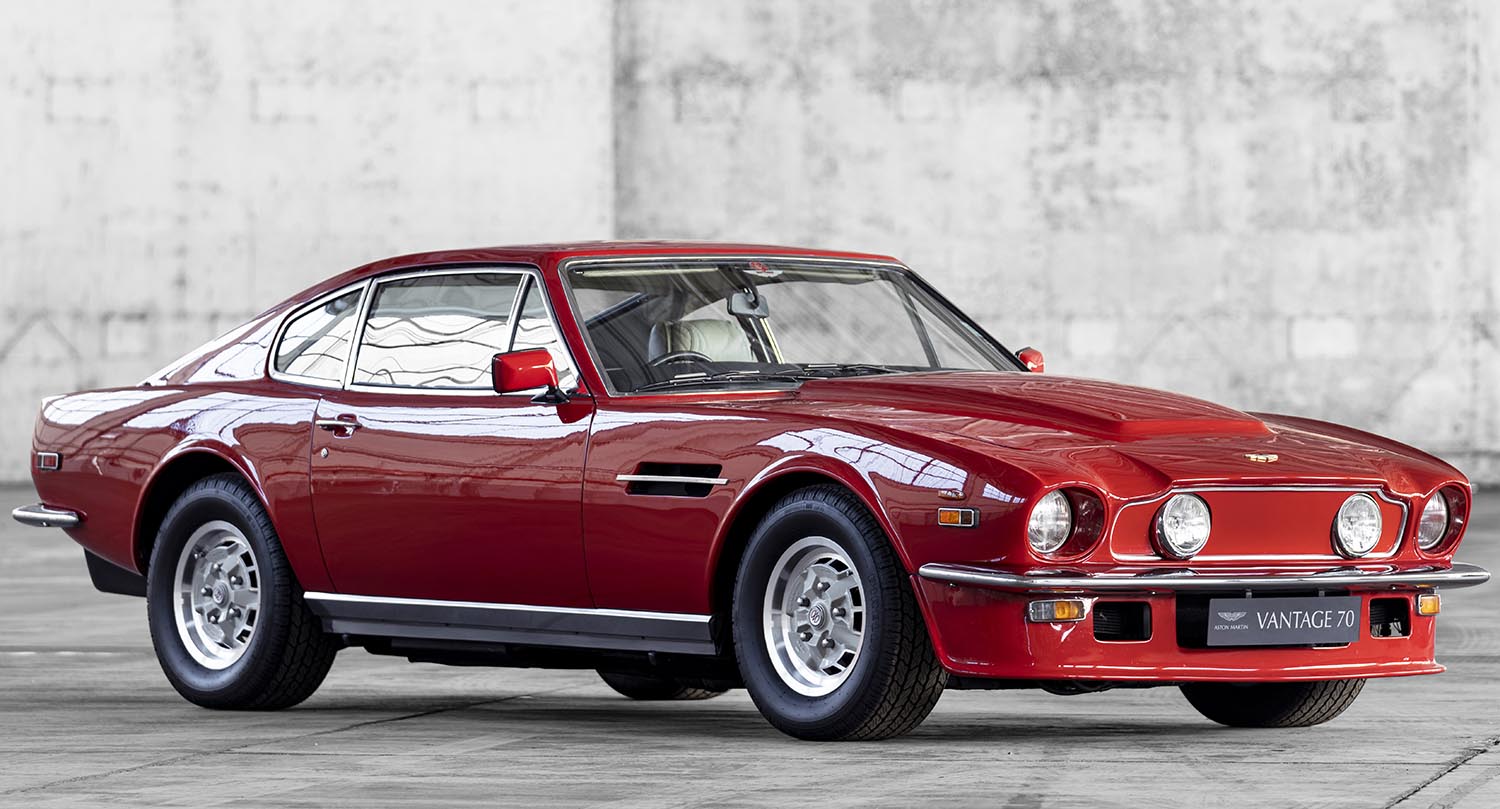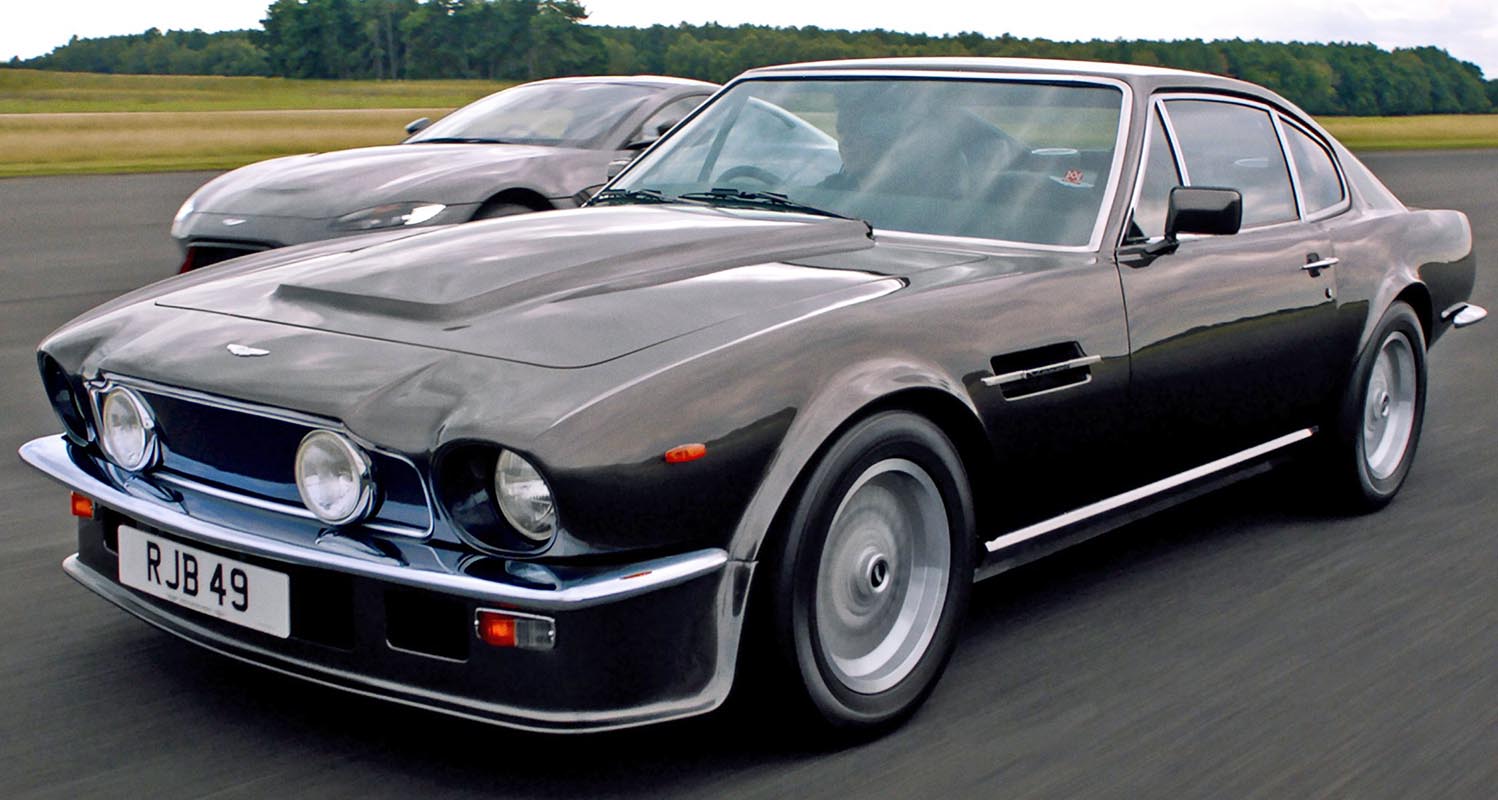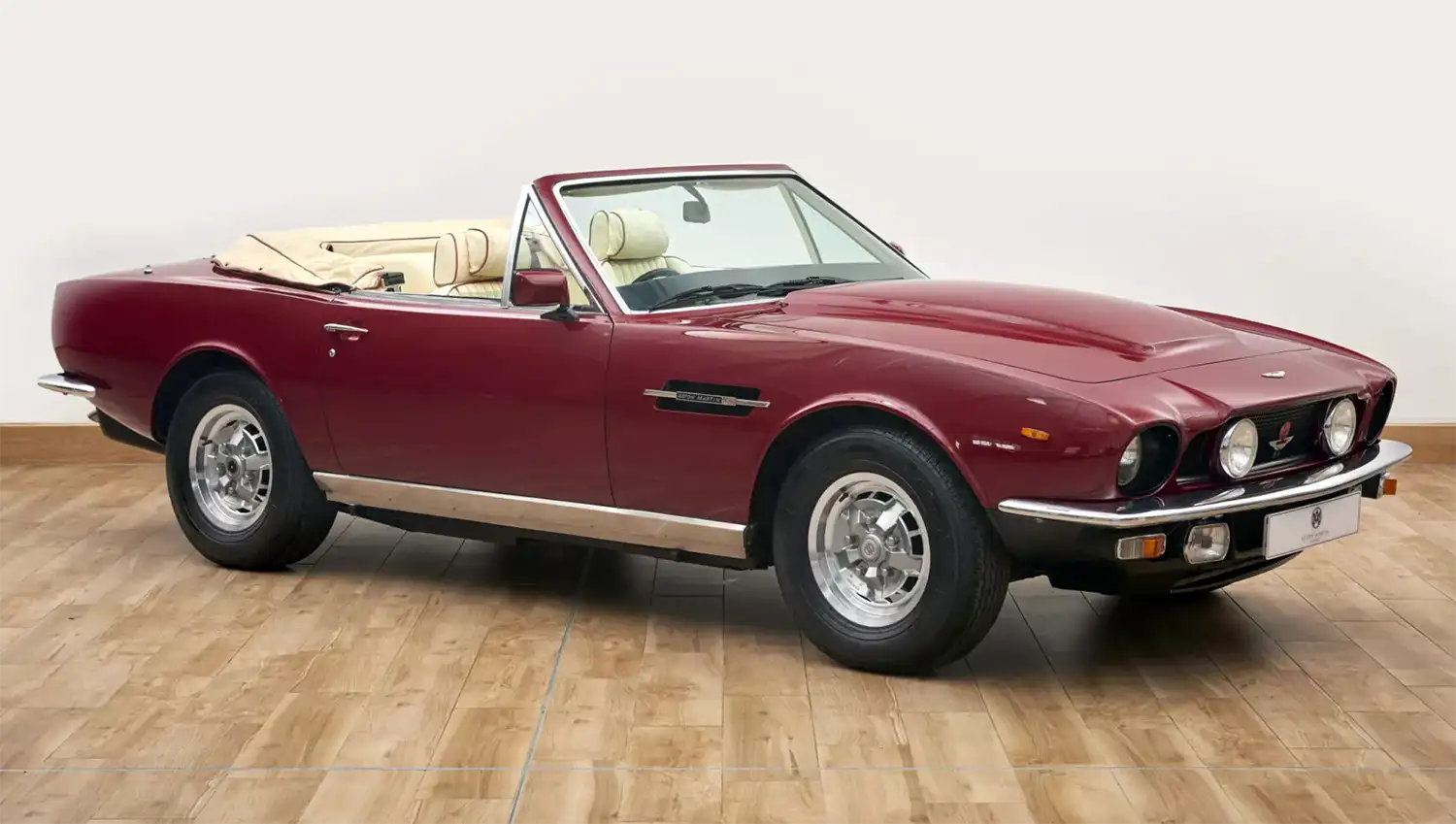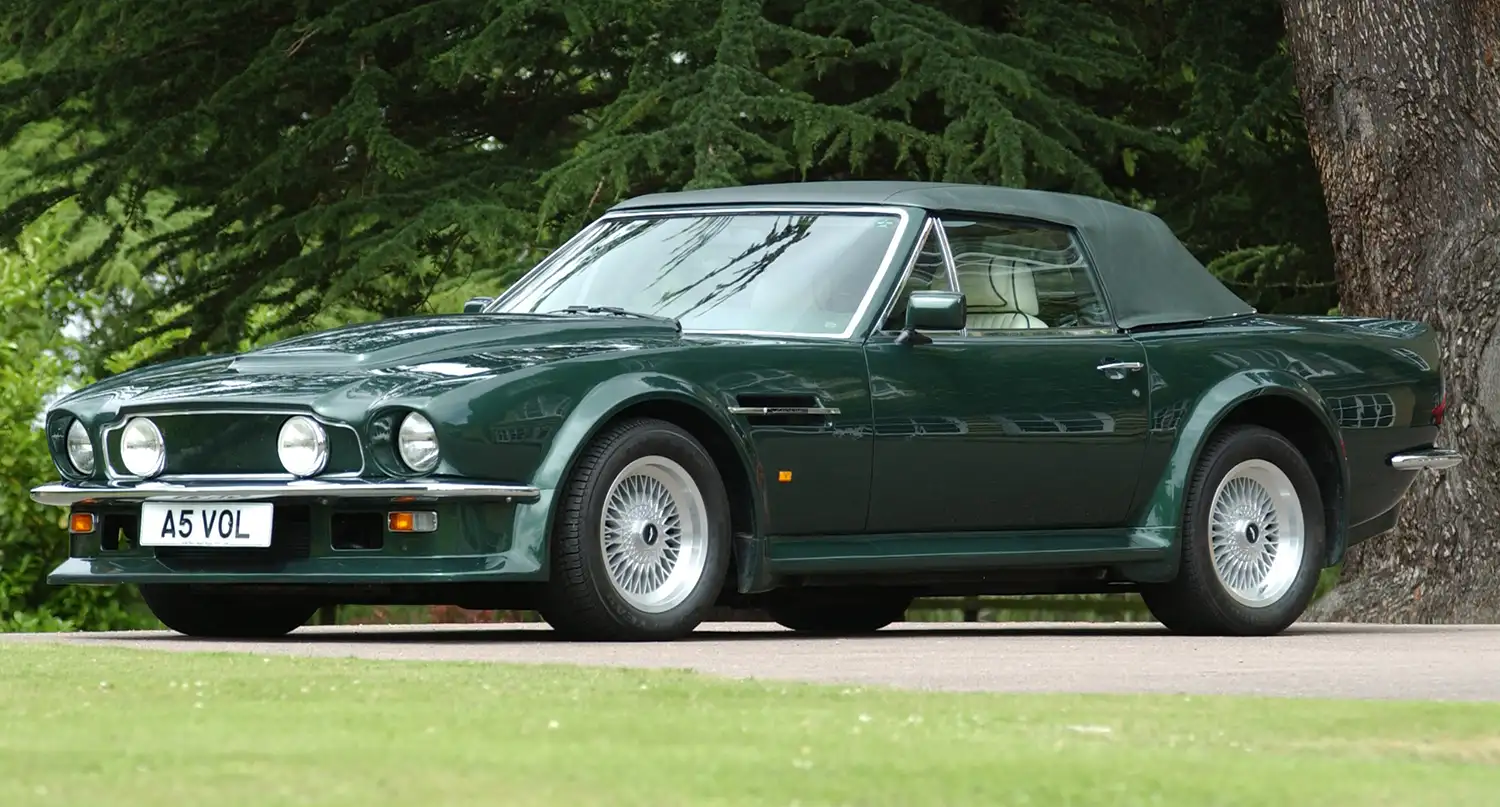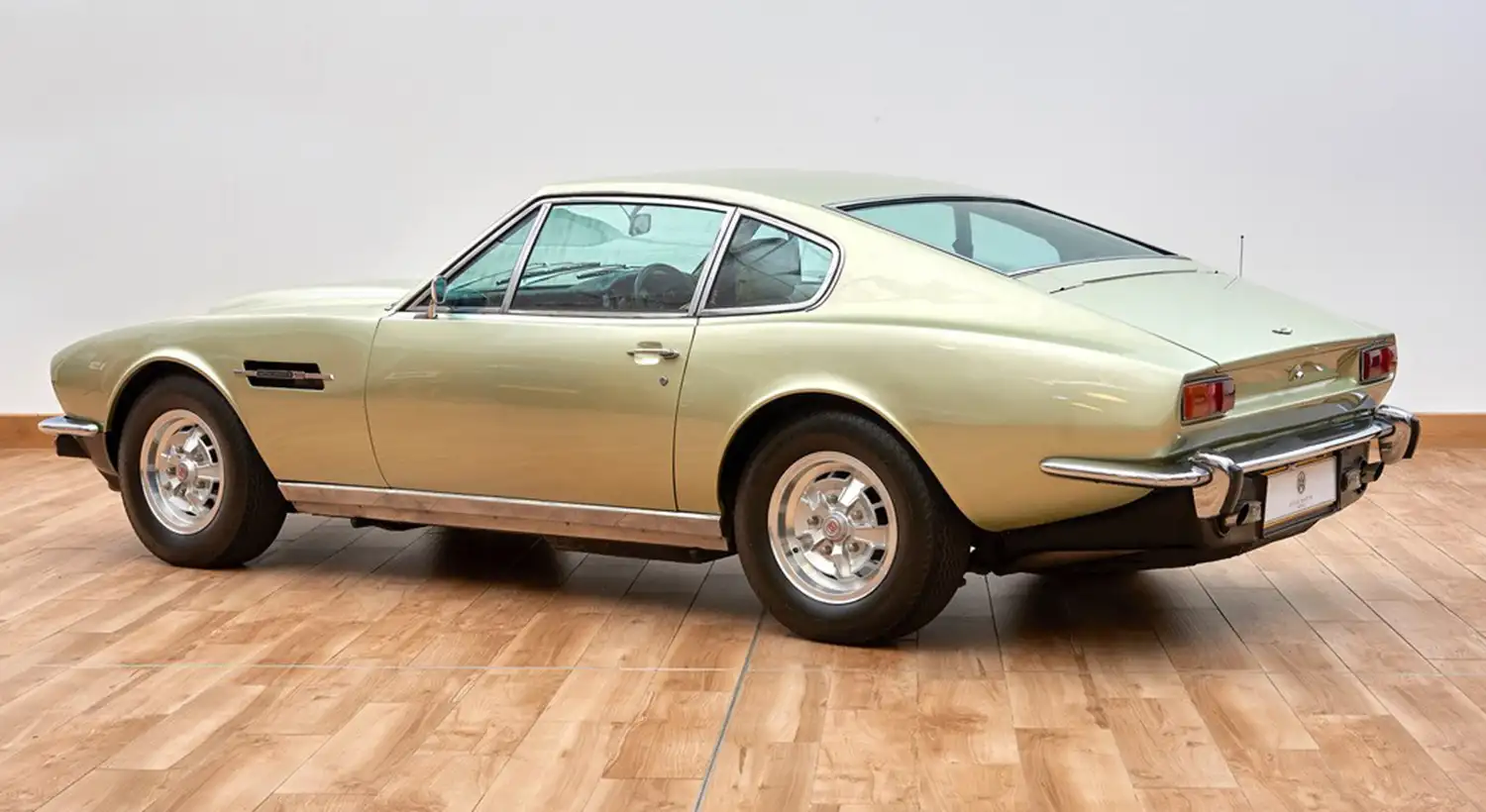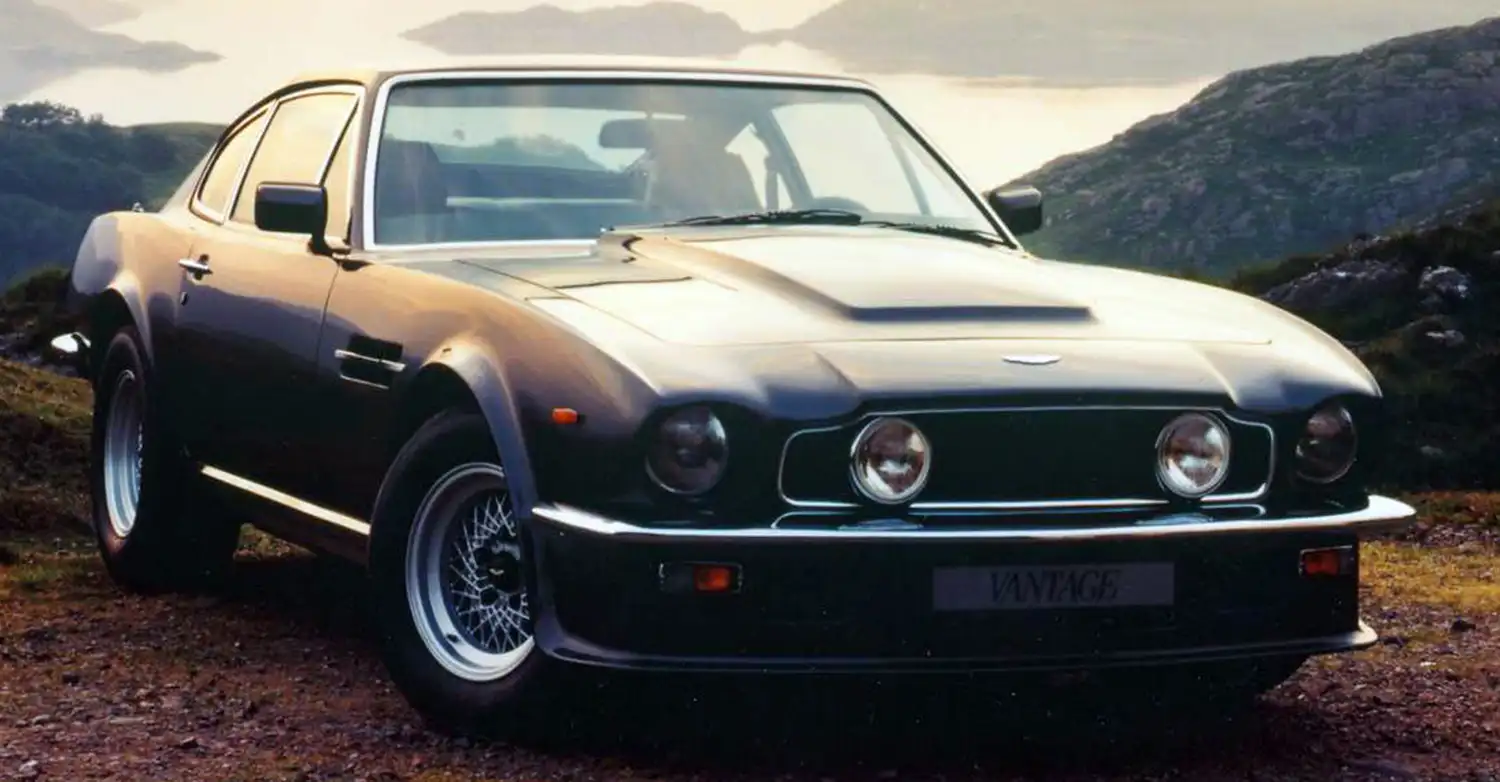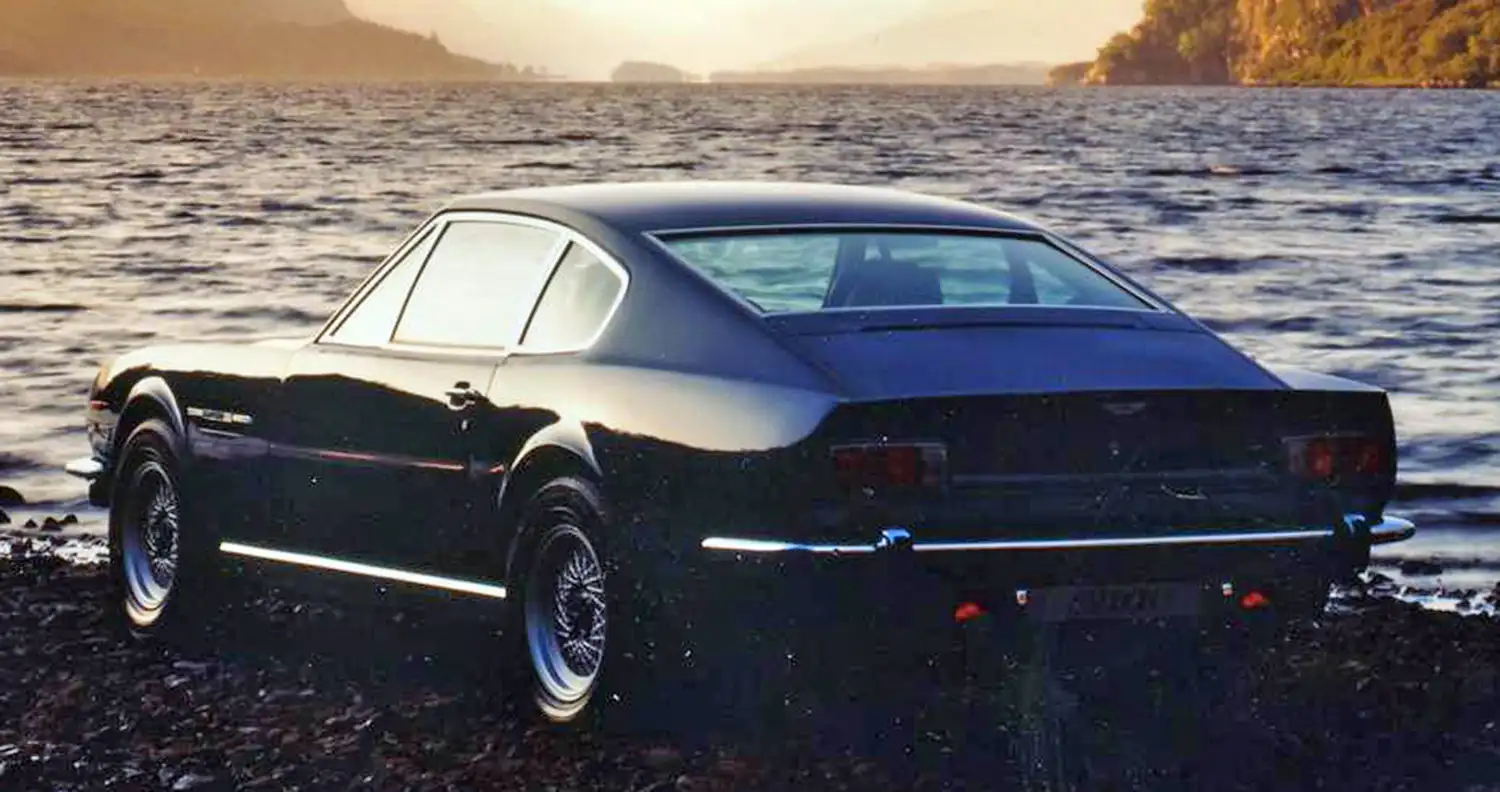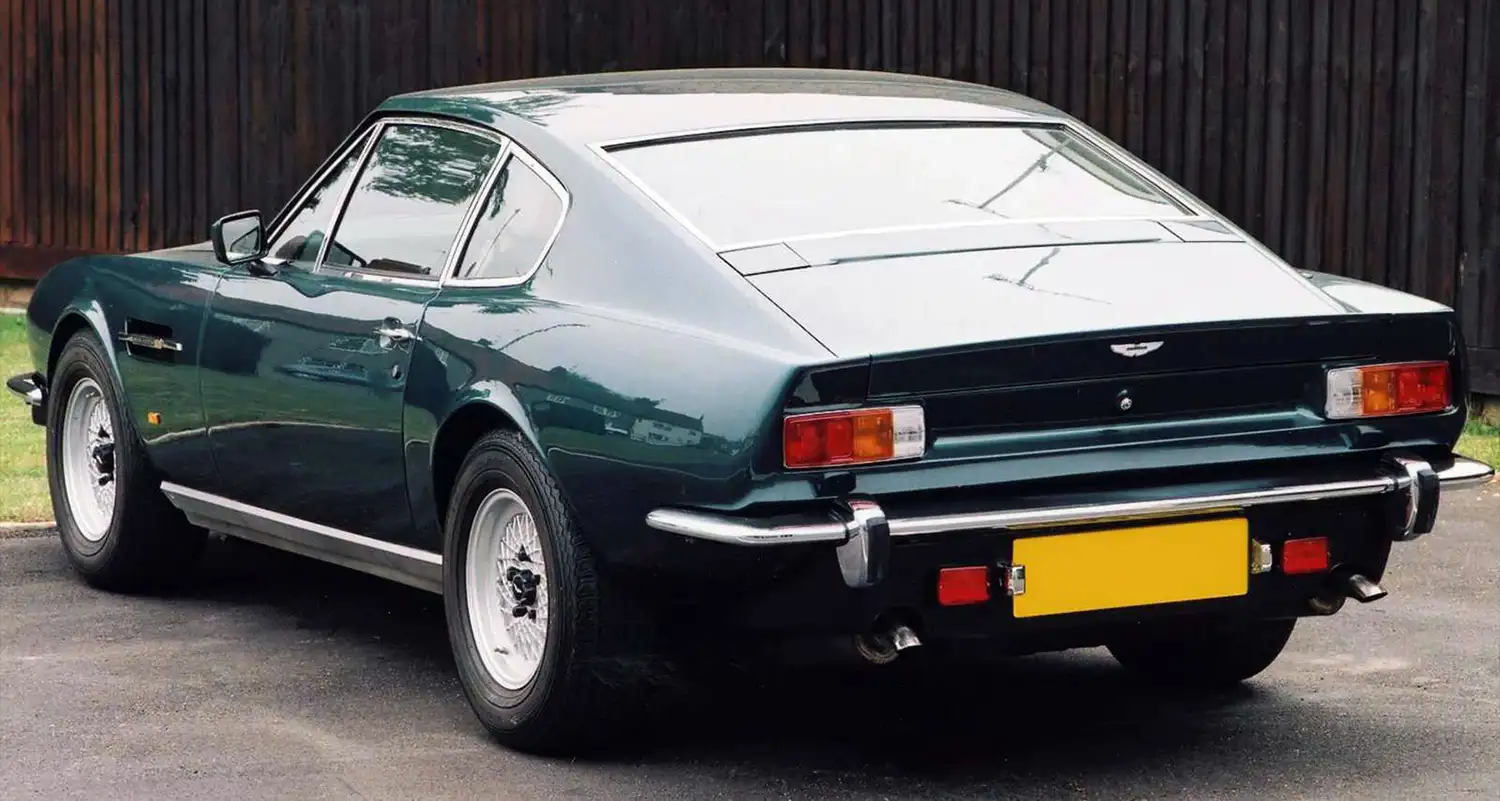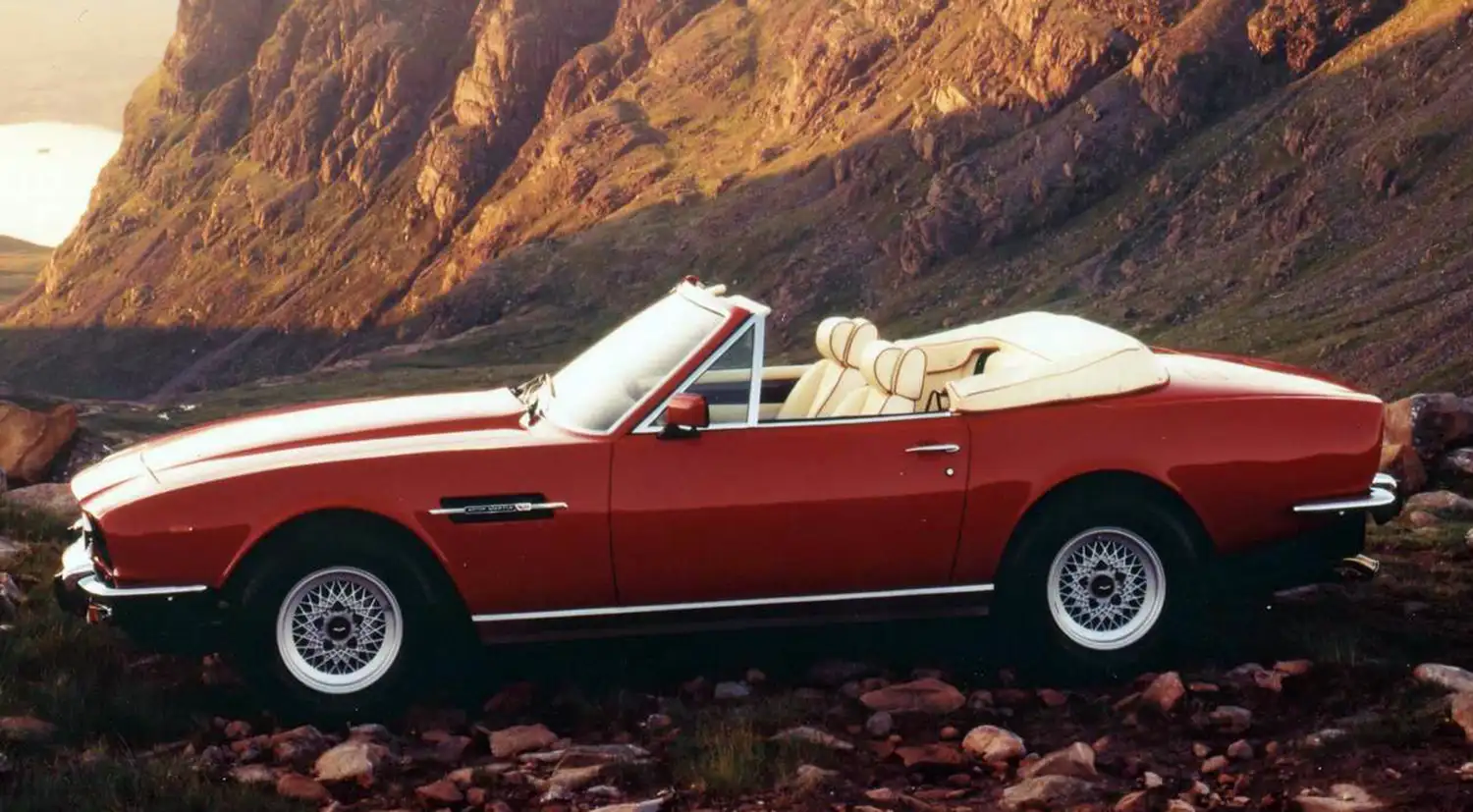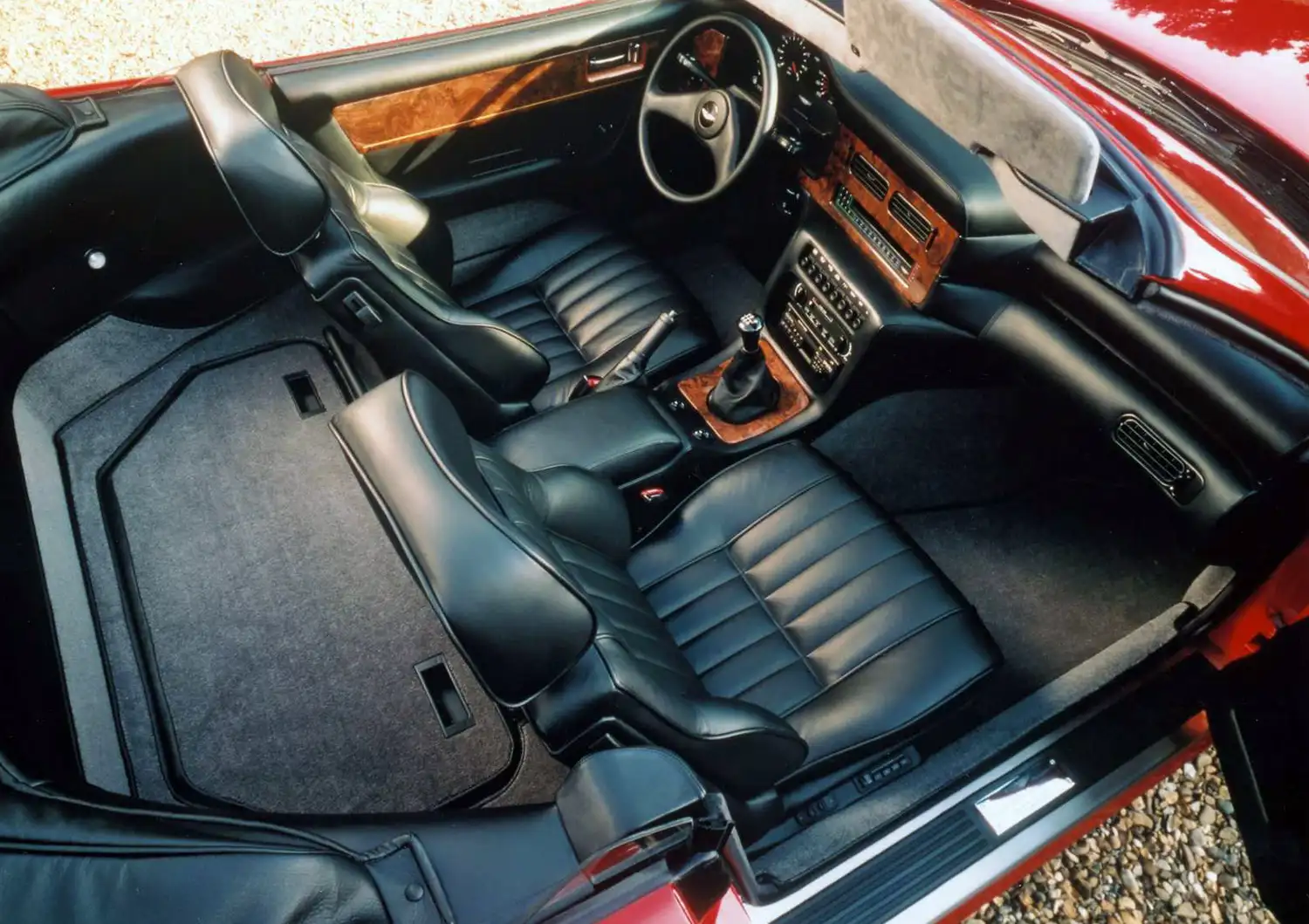
The next Aston Martin Vantage however – indeed the original Aston Martin V8 Vantage – was cut from very different engineering and performance cloth. It was hailed at its 1977 introduction as “Britain’s first supercar”. It could outrun a Ferrari Daytona in the 0-60 mph sprint, and if pushed to the limit it could record a top speed of 170 mph.
Its engine was shared with the Lagonda luxury saloon of the day, but it used high-performance camshafts, an increased compression ratio, larger inlet valves and bigger carburettors mounted on new manifolds for increased output.
A true British bruiser, the V8 Vantage’s performance belied its significant heft. Contemporary car magazine road tests claimed that the ‘old school’ Vantage offered superior performance to such greats as the Lamborghini Countach, the Ferrari 512BB and even the Porsche 911 Turbo of the day.
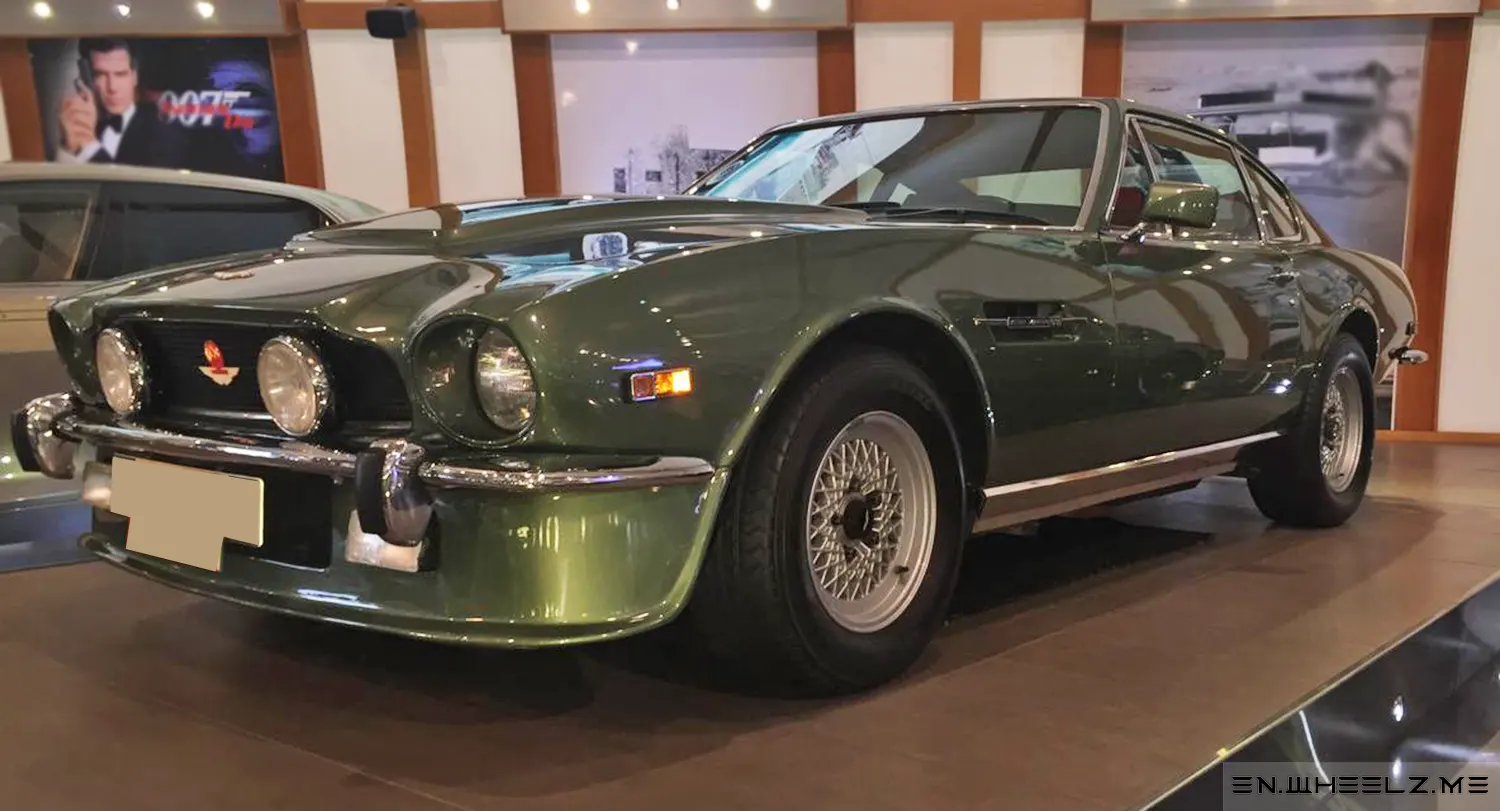
Critical to the huge performance leap of this Vantage was a significant upgrade to the V8 engine which in the contemporary AM V8 was offering something in the order of 300bhp. The carburettors were changed to the larger 48 IDF Weber which were fitted to revised inlet manifolds. Together with larger valves, revised exhaust manifolds, revised camshafts and a higher compression ratio, once run-in, the engines were capable of 380bhp. At the time, though, and with true British modesty, the power output was described by Aston Martin simply as “adequate”.
The V8 Vantage’s chassis was stiffened with adjustable Koni dampers, shortened springs and a larger front anti-roll bar. Wider 255/60 VR15 Pirelli CN12 tyres were fitted together with spacers to widen the track.
External modifications were clear, and aerodynamic in nature. This V8 Vantage was easily distinguished for the standard AM V8 by the front air dam, twin Cibie H4 driving lights within the blanked off grille (cooling air for the radiator being drawn in from beneath the bumper) and a boot lid spoiler at the rear. All of these aerodynamic additions were essential to reduce lift. Another feature was the use of a sealed bonnet bulge to cover a larger airbox above the down draught carburettors.
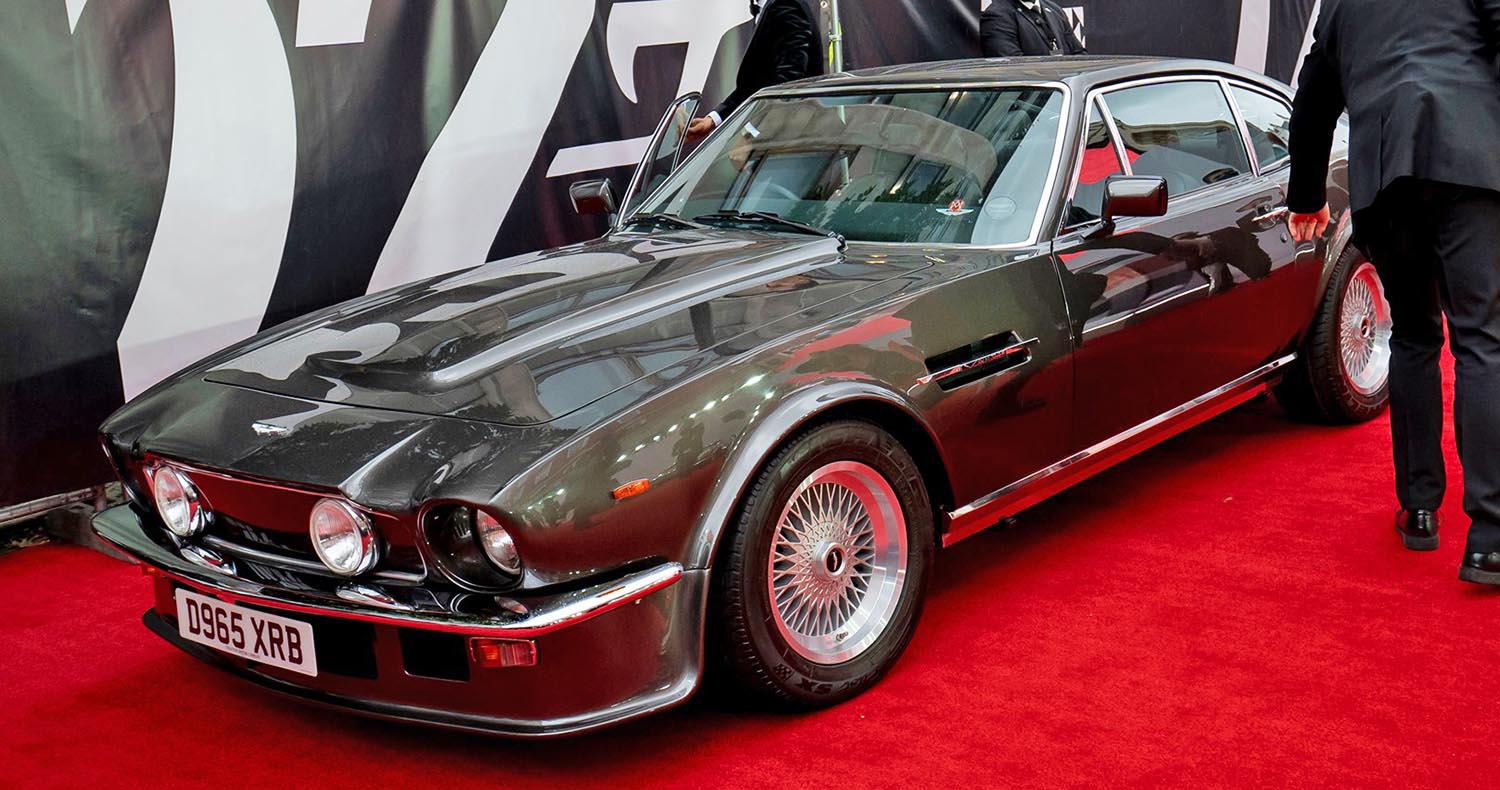
The V8 Vantage evolved significantly over the course of its reign – which spanned three decades and only ended in 1990 with final deliveries of the last 5.3-litre ‘X-Pack’ car. It even provided the basis for a shorter, radical, and hyper rare, V8 Vantage Zagato saloon. Throughout its build period the Vantage remained the jewel in Aston Martin’s burnished crown.
Technical Specifications
- Engine: dohc V8, 5340 cc, 380 bhp @ 6000 rpm
- Transmission: ZF 5-speed manual
- Suspension:
- Front: Wishbones, coil springs, anti-roll bar
- Rear: de Dion axle, Watt linkage, coil springs
- Brakes: Girling discs all round, servo assisted
- Top Speed: 170 mph
- 0-60 mph: 5.3 sec.
- Price New: £20,000 (1977) £50,000 (1984) £75,000 (1987)
- Production Dates: March 1977 – 1989
Aston Martin V8 Volante
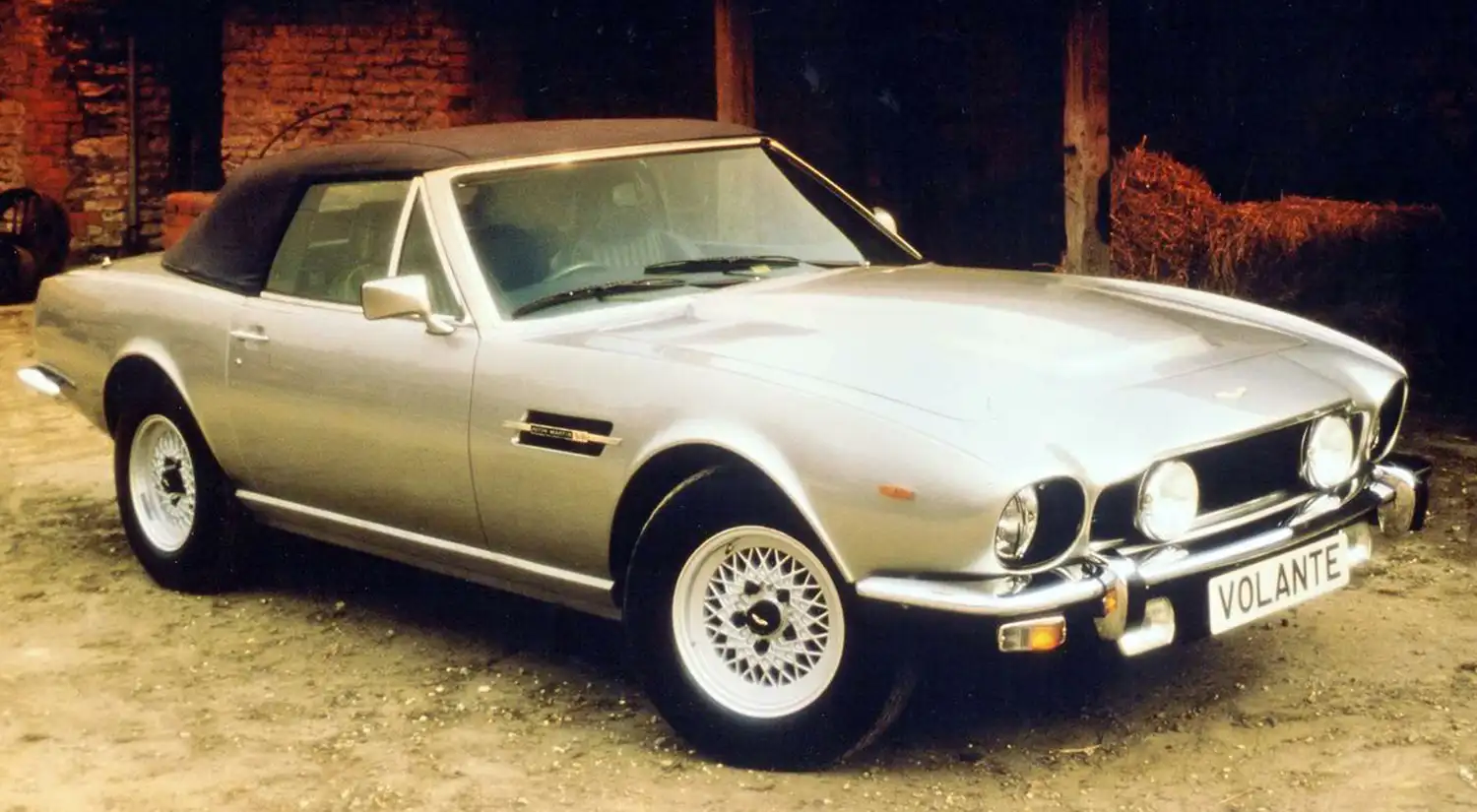
By 1978, few new open cars were being built anywhere in the world. But persistent demand was demonstrated by the escalation of the price of second-hand Aston Martin drop-head coupes and the American market was wide open, as by then the American industry had stopped manufacturing convertibles.
The Aston Martin V8 Volante announced on 21st June 1978, was therefore assured a warm welcome. Its specification follows the contemporary Aston Martin V8 Saloon saloon, but was ahead in having polished burr walnut trim and a re-designed bonnet. The hood was power operated as before and was fully lined for noise insulation.
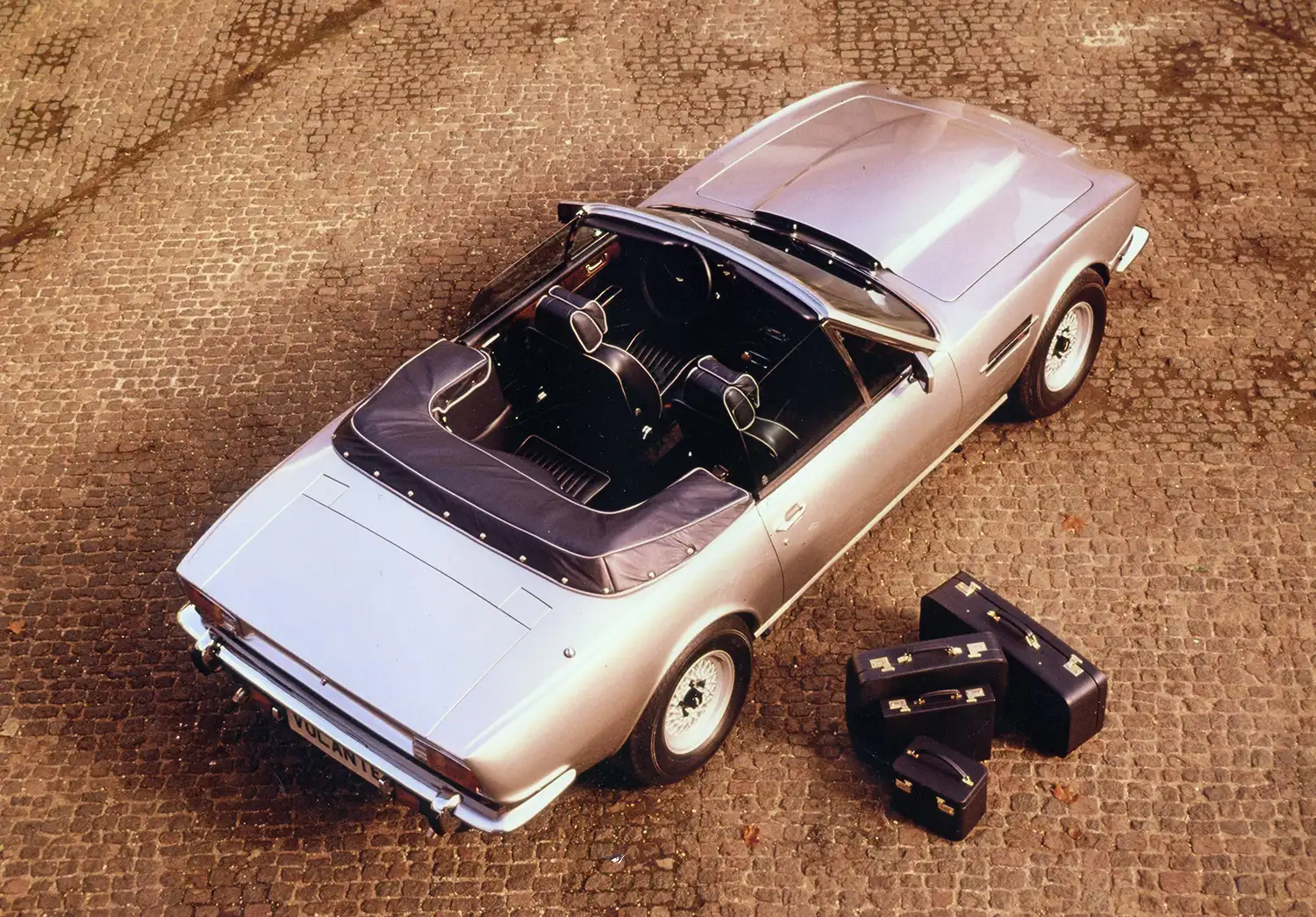
Technical Specifications (Aston Martin V8 Volante )
- Engine: dohc V-8
- Transmission: 4-speed manual
- Suspension
- Front: trailing arms, coil springs, anti-roll bar
- Rear: live axle, trailing links, Panhard rod, coil springs
- Brakes: front/rear drums
- Height: 4’6″ (137cm)
- Weight: 1791kg (3,950lb)
- Top Speed: 150 mph
- 0-60 mph: 8.9
- Price New: £33,864
- Production Dates: June 1978 – 1989
